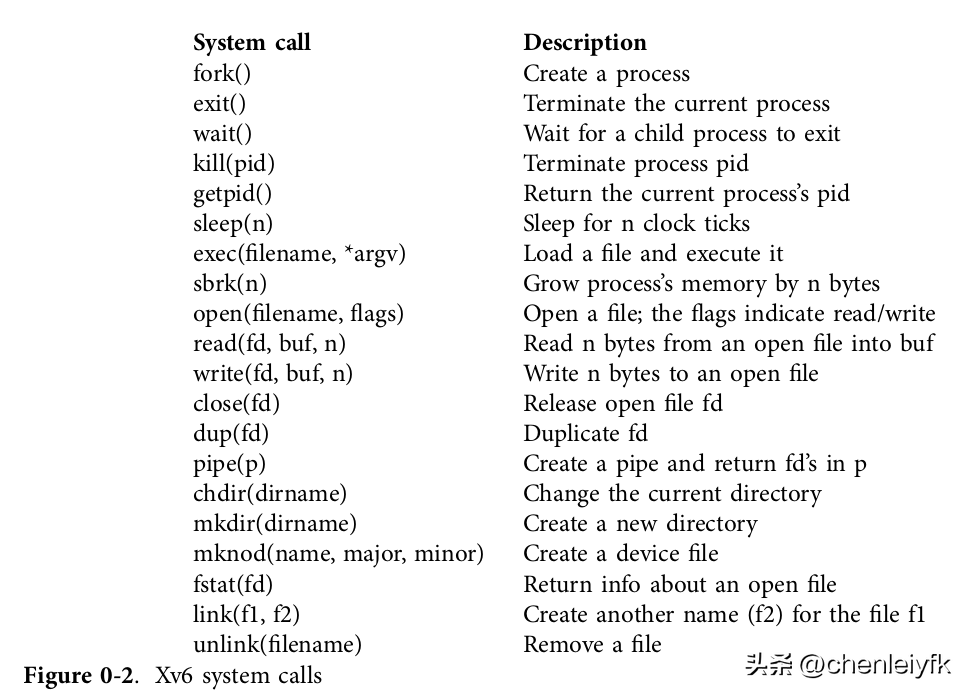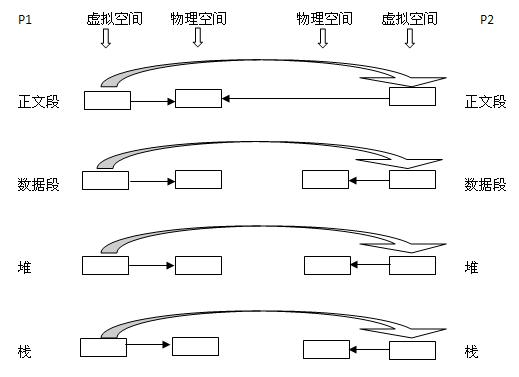The first question one might ask when encountering an operating system is why have it at all? That is, one could implement the system calls in Figure 0-2 as a library, with which applications link. In this plan, each application could even have its own library tailored to its needs. Applications could directly interact with hardware resources and use those resources in the best way for the application (e.g., to achieve high or predictable performance). Some operating systems for embedded devices or real-time systems are organized in this way.
当谈及操作系统时,人们可能会问的第一个问题是为什么需要它?也就是说,我们可以将图0.2中的系统调用实现为一个库,应用程序可以与之链接。在此方案中,每个应用程序甚至可以根据自己的需求定制自己的库。应用程序可以直接与硬件资源交互,并以应用程序的最佳方式使用这些资源(例如,实现高性能或可预测的性能)。一些嵌入式设备或实时系统的操作系统就是这样组织的。
The downside of this library approach is that, if there is more than one application running, the applications must be well-behaved. For example, each application must periodically give up the processor so that other applications can run. Such a cooperative time-sharing scheme may be OK if all applications trust each other and have no bugs. It’s more typical for applications to not trust each other, and to have bugs, so one often wants stronger isolation than a cooperative scheme provides.
这种库函数方法的缺点是,如果有多个应用程序在运行,这些应用程序必须表现良好。例如,每个应用程序必须定期放弃中央处理器,以便其他应用程序能够运行。如果所有应用程序都相互信任并且没有错误,这种协同操作的分时方案可能是可以的。 然而更典型的情况是, 应用程序互不信任且存在bug,所以人们通常希望提供比合作方案更强的隔离。
To achieve strong isolation it’s helpful to forbid applications from directly accessing sensitive hardware resources, and instead to abstract the resources into services. For example, applications interact with a file system only through open, read, write, and close system calls, instead of read and writing raw disk sectors. This provides the application with the convenience of path names, and it allows the operating system (as the implementor of the interface) to manage the disk.
为了实现强隔离, 最好禁止应用程序直接访问敏感的硬件资源,而是将资源抽象为服务。 例如,Unix应用程序只通过文件系统的open、read、write和close系统调用与存储交互,而不是直接读写磁盘。这为应用程序提供了方便实用的路径名,并允许操作系统(作为接口的实现者)管理磁盘。
Similarly, Unix transparently switches hardware processors among processes, saving and restoring register state as necessary, so that applications don’t have to be aware of time sharing. This transparency allows the operating system to share processors even if some applications are in infinite loops.
同样,Unix在进程之间透明地切换硬件处理器,根据需要保存和恢复寄存器状态,这样应用程序就不必意识到分时共享的存在。这种透明性允许操作系统共享处理器,即使有些应用程序处于无限循环中。
As another example, Unix processes use exec to build up their memory image, instead of directly interacting with physical memory. This allows the operating system to decide where to place a process in memory; if memory is tight, the operating system might even store some of a process’s data on disk. Exec also provides users with the convenience of a file system to store executable program images.
另一个例子是,Unix进程使用exec来构建它们的内存映像,而不是直接与物理内存交互。这允许操作系统决定将一个进程放在内存中的哪里;如果内存很紧张,操作系统甚至可以将一个进程的一些数据存储在磁盘上。exec还为用户提供了存储可执行程序映像的文件系统的便利。
Many forms of interaction among Unix processes occur via file descriptors. Not only do file descriptors abstract away many details (e.g. where data in a pipe or file is stored), they also are defined in a way that simplifies interaction. For example, if one application in a pipeline fails, the kernel generates end-of-file for the next process in the pipeline.
As you can see, the system call interface in Figure 0-2 is carefully designed to provide both programmer convenience and the possibility of strong isolation. The Unix interface is not the only way to abstract resources, but it has proven to be a very good one.
Unix进程之间的许多交互形式都是通过文件描述符实现的。文件描述符不仅抽象了许多细节(例如,管道或文件中的数据存储在哪里),而且还以简化交互的方式进行了定义。例如,如果流水线中的一个应用程序失败了,内核会为流水线中的下一个进程生成文件结束信号(EOF)。
图0.2中的系统调用接口是精心设计的,既为程序员提供了便利,又提供了强隔离的可能性。Unix接口不是抽象资源的唯一方法,但它已经被证明是一个非常好的方法。

系统调用接口
限 时 特 惠: 本站每日持续更新海量各大内部创业教程,一年会员只需98元,全站资源免费下载 点击查看详情
站 长 微 信: lzxmw777






